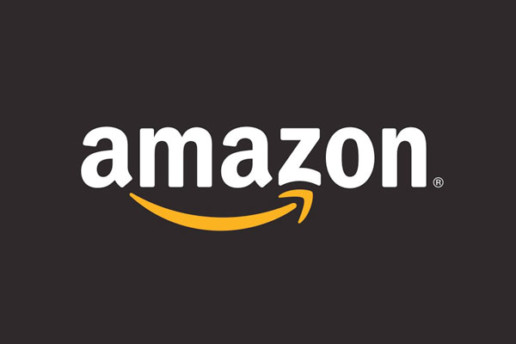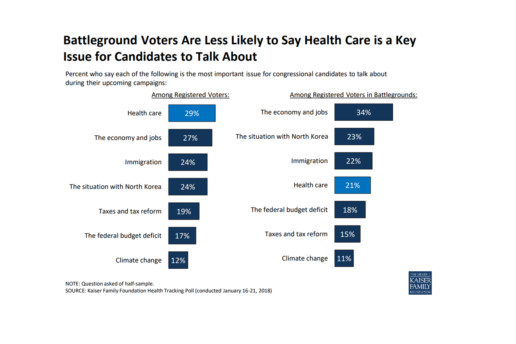Why it might be time to say goodbye to exit interviews
Do you still take part in the practice of asking departing workers to sit down for a final interview? Many companies, large and small, are ending the practice of exit interviews. Read on to learn more.
The exit interview is a long-time staple of HR departments. But an increasing number of companies large and small are ending the practice of asking departing workers to sit down for a final interview.
The concept seems sound. You can take the opportunity to hear unvarnished opinions about what your company or team does well and what it needs to improve on, and then take that back to management and implement changes that’ll help attract and retain great talent.
In practice, however, the process is often uncomfortable and many HR pros report that the folks who are interested in talking are often the ones who complained the most while on the payroll. The litany of gripes and rehashed personality clashes rarely adds much to the organization’s insight into building a better workplace.
If you can’t say anything nice…
Most of the rest, if they even will agree to an exit interview – and you can’t make them do that, of course – are going to be very careful to say only positive or neutral things about their experience at your organization. That helps to prevent bridge burning for them, in case they ever want to come back or they run into a colleague at a job interview later in their career. But for your team, the result is likely the same as with the complainer in the first example: A one-sided, probably inaccurate picture of what you are doing right and how you can improve in areas that need work.
Finally, much of the work your HR team does to schedule an interview as workers are packing up their personal stuff is likely to be wasted. Advice on employee-focused employment websites and other social media leans heavily towards “How to Avoid the Exit Interview.” Suggested tactics range from saying you can’t spare the time because you don’t want to leave your soon-to-be-ex colleagues hanging to asking to schedule after the leave date and then just ghosting the phone call altogether.
It’s still worthwhile to do a formal review to close out individual projects and to debrief contractors as they wrap up, but it’s probably time to say goodbye to the “tell us what you really think” sessions with employees who have decided to move on.
SOURCE: McElgunn, T. (27 December 2018) "Why it might be time to say goodbye to exit interviews" (Web Blog Post). Retrieved from https://www.hrmorning.com/why-it-might-be-time-to-say-goodbye-to-exit-interviews/
E-Verify Is Down. What Do Employers Do Now?
Are you questioning what you should do now that E-Verify, the federal government's electronic employment verification system, has expired? Read this blog post from SHRM to learn more.
What are employers supposed to do now that E-Verify—the federal government's electronic employment verification system—has expired?
Funding and congressional authorization for the program ran out Dec. 22, 2018, as the government went into a partial shutdown after Congress and the White House could not agree on how to fund some agencies, including the U.S. Department of Homeland Security (DHS), which administers the system, for fiscal year 2019.
E-Verify compares information from an employee's Form I-9 to DHS and Social Security Administration (SSA) records to confirm employment eligibility. Employers enrolled in the program are required to use the system to run checks on new workers within three days of hiring them.
During the government shutdown, employers will not be able to enroll in E-Verify, initiate queries, access cases or resolve tentative non-confirmations (TNCs) with affected workers.
All employers remain subject to Form I-9 obligations, however. "Remember that the government shutdown has nothing to do with an employer's responsibilities to complete the Form I-9 [in a timely manner]," said Dawn Lurie, senior counsel in the Washington, D.C., office of Seyfarth Shaw. "Specifically, employees are required to complete Section 1 of the I-9 on or before the first day of employment, and employers must complete Section 2 of the I-9 no later than the third business day after an employee begins work for pay."
No Cause for Alarm
Lurie advised employers not to panic while E-Verify is down. "Employers will not be penalized as a result of the E-Verify operations shutdown," she said. "Employers will not be penalized for any delays in creating E-Verify cases. However, employers are reminded that they must continue to complete I-9s in compliance with the law, and when E-Verify becomes available, create cases in the system."
To minimize the burden on both employers and employees, DHS announced that:
- The three-day rule for creating E-Verify cases is suspended for cases affected by the unavailability of the service. "Normally, the employer enters information from the I-9 into E-Verify within three days of hire, but that won't be possible while the system is unavailable," said Montserrat Miller, a partner in the Atlanta office of Arnall Golden Gregory. "DHS will provide a window of time to submit those held cases once service resumes."
- The time period during which employees may resolve TNCs will be extended. The number of days E-Verify is unavailable will not count toward the days the employee has to begin the process of resolving a TNC. "Employers can't take any adverse action against a worker with a pending TNC regardless, shutdown or not," Miller said. Currently, an employee who chooses to contest a TNC must visit an SSA field office or call DHS within eight federal government working days to begin resolving it. This period will have to be extended because of the shutdown, she added.
- Additional guidance regarding the three-day rule and time period to resolve TNC deadlines will be provided once operations resume.
Amy Peck, an immigration attorney with Jackson Lewis in Omaha, Neb., advised employers to keep track of all new hires with completed I-9s for whom there are no E-Verify queries due to the shutdown. She also recommended attaching a memo in a master E-Verify file tracking the days that the program was unavailable. "I've seen the discrepancy come up years later during an audit," she said.
"Once the system is back up, work with counsel on how much time employees have to resolve their TNCs," Peck said. "Someone receiving a TNC the day before the shutdown is a different case than somebody who had 10 days to resolve their TNC when the shutdown occurred. Those circumstances should be considered on a case-by-case basis."
Federal contractors with a federal acquisition regulation E-Verify clause should contact their government contracting officers to extend deadlines. "Federal contractors have a particular concern because nobody is supposed to be working who has not been verified through the system," Peck said. "People can be hired, but whether they are allowed to work on the contract before being run through E-Verify is a critical consideration that should be discussed with counsel."
Prepare for the Resumption of Service
Miller said employers should monitor the shutdown. "When it is over, log in to the system and see what instructions there are for creating and submitting queries," she advised. "There is an obligation to create those queries if you are enrolled in the program, even if enrolled voluntarily."
The backlog created as a result of the shutdown might have a significant impact on employers that process many E-Verify cases and specifically on the HR staff and other team members in charge of the process.
"Not all employers will be able to push all their cases through at once when the shutdown ends," Miller said. "If everyone did that, the system would crash. DHS will provide instructions on how to submit queries. Employers will be asked why the query is being submitted after the required three days. In the past, 'Government Shutdown' was one of the options in the drop-down menu."
Peck reminded employers that the loss of E-Verify does not mean there is a prohibition against hiring. "Companies should continue to hire as they need," she said.
SOURCE: Maurer, R. (3 January 2019) "E-Verify Is Down. What Do Employers Do Now?" (Web Blog Post). Retrieved from https://www.shrm.org/ResourcesAndTools/hr-topics/talent-acquisition/Pages/EVerify-Outage-What-Do-Employers-HR-Do.aspx
Employee benefit trends to watch in 2019
Are you looking ahead to 2019? As the year comes to an end, employment rates are continuing to rise and the economy is still showing signs of growth. Continue reading for employee benefits trends to watch in 2019.
As we close out 2018, the economy is still showing signs of tremendous growth and employment rates continue to rise.
For employers looking ahead to next year, the health of the economy will play a part in how they begin thinking about which benefits to implement. Not only can employees be more selective about the companies they apply to work for, but companies will have to differentiate themselves with their benefits catalog to attract the best candidates.
Along with a shifting political climate, the impacts of the Affordable Care Act will still need navigating in 2019 as health care costs remain a prominent issue.
Shifting health care costs
Health care costs are on track to eclipse $15,000 per employee per year in 2019. In an effort to reduce these costs, employers are shifting their attention to finding alternative health care options for employees.
Expansion of telemedicine and virtual care are at the top of the list for employers looking to reduce their health care costs.
Additionally, after the passing of the Affordable Care Act, many employers shifted their attention to offering consumer-direct health plans (CDHPs) as the sole option at their organization.
These plans combined high-deductibles with health savings accounts. By asking employees to pay for their doctor's visits with a savings account, they’re likely to seek out cheaper coverage, thus saving the company money overall.
The popularity of CDHPs was driven in large part by a proposed 40 percent tax on high-value health care plans. Employers quickly moved to CDHPs to save money, but the proposed tax has yet to take effect and employers are less eager to shift to CDHP options so quickly.
Custom communications
Personalized communications to employees about their benefits are becoming more prevalent.
Every employees’ benefits journey is different and their communications should be too.
As employees show interest or a need for a certain type of benefit, benefits platforms are gearing up to be able to communicate directly with employees to help.
For employees who prefer to communicate via text message or calendar reminders, platforms will begin to integrate more closely with employees’ lives to deliver the guidance they need.
Employers should focus on partnering with providers who are delivering customized messaging to employees to maximize engagement and adoption rates. 2019 will likely see employers not only offering more customized and personalized benefits, but also more robust communications that speak directly to employees’ needs.
Benefits over salary
Hiring efforts have been made difficult by a strong job market and economy. Employers in almost every industry are struggling to attract talent because of stiff competition.
Basic benefits like paid vacation and a 401(k) aren’t enough to break through the noise anymore. People are able to be more selective about which jobs they apply for based on the benefits being offered.
In 2019, employers will need to focus on making their entire benefits package more enticing—including offering help with things like student loans, tuition reimbursement, and college savings plans.
Rise of voluntary benefits
Voluntary benefits, while supplemental to core benefits like health insurance, are a way to address the unique needs of employees and allow employees to personalize their rewards.
Voluntary benefits are appealing to employees because they offer a nice flexibility to their compensation package. As employers are discovering that benefits are not a one-size-fits-all package, voluntary benefits provide a cadre of solutions that can be built for the employee base.
Attractive benefits can make the difference between whether a prospective employee accepts a job offer or not. In 2019, employees will demand more from their benefits packages and the addition of voluntary benefits will be used as a factor in recruitment.
As 2018 comes to a close, employers should focus on talking to employees about their benefits and where they’d like to see improvement. Start conversations with your IT team about security measures you can work towards in 2019 and try to begin the conversation with your benefits providers about how to communicate more directly with your employees to stay competitive in the current job market.
SOURCE: Whitlow, C. (29 November 2018) "Employee benefit trends to watch in 2019" (Web Blog Post). Retrieved from https://www.benefitspro.com/2018/11/29/employee-benefit-trends-to-watch-in-2019/
How AI can predict the employees who are about to quit
Employers are now utilizing artificial intelligence (AI) to help predict how likely it is that an employee will stay with their company. Read this blog post to learn more.
Tim Reilly had a problem: Employees at Benchmark's senior living facilities kept quitting.
Reilly, vice president of human resources at Benchmark, a Massachusetts-based assisted living facility provider with employees throughout the Northeast, was consistently frustrated with the number of employees that were leaving their jobs. Staff turnover was climbing toward 50%, and after many approaches to improve retention, Benchmark turned to Arena, a platform that uses artificial intelligence to predict how likely it is that an employee will stay in their job.
“Our new vision is about human connection,” he says. “With a turnover rate that’s double digits, how do you really transform lives or have that major impact and human connection with people who are changing rapidly?”
Since Benchmark started using Arena, staff turnover has fallen 10%, compared to the same time last year. During the hiring process, Arena looks at third-party data, like labor market statistics, combined with applicants' resume information and an employee assessment that will give them a better sense of how long a candidate is likely to stay in a role.
“The core problem we’re solving is that individuals aren’t always great at hiring,” says Michael Rosenbaum, chairman of Arena. “Job applicants don’t always know where they’re likely to be happiest. By using the predictive power of data, we’re essentially helping to answer that question.”
Arena isn’t interested in how an employee responds to assessment questions, he says. They’re much more interested in how employees approach the questions.
“What you’re really doing is your collecting some information about how people react to stress,” Rosenbaum adds.
For example, if an employee is applying for a housekeeping role, Arena may give them a timed advanced math question to complete — something they may never use in their actual job. Arena then studies how the candidate responds to the question — analyzing key strokes and tracking how the individual tackles the challenge. The software can then get a better sense of how an applicant responds under pressure.
Overtime, Arena’s algorithm learns from the data it collects. The system tracks how long a specific employee stays at the company and can then better predict, moving forward, whether other employees with similar characteristics will stay.
“Overtime they are able to sort of refine that prediction about those that are most likely to stay, or be retained with our organization,” Reilly says. “They may also make a prediction on someone who might not last very long.”
Reilly says he’s been encouraging hiring managers at the facilities to use the data given to them by Arena to take a closer look at the candidates the platform rates as highly likely to stay in their roles. Although it’s ultimately up to the hiring manager who they select.
“Focus your time on the [candidates] that are more likely to stay with us longer,” Reilly says.
For now, Arena exclusively works with healthcare companies. The platform is currently being used by companies like Sunrise Senior Living and the Mount Sinai Health System in New York. Moving forward, Rosenbaum says, they’re hoping to get into other industries, although he would not specify which.
Rosenbaum says Arena is not only focused on improving the quality of life for employees, but also for the patients and seniors that use the facilities. The happiness of patients, he says, is closely tied to those that are caring for them.
“Is someone who is in a senior living community happy? Do they have a positive experience? It is very closely related to who’s caring for them, who’s supporting them,” he says.
This article originally appeared in Employee Benefit News.
SOURCE: Hroncich, C. (15 November 2018) "How AI can predict the employees who are about to quit" (Web Blog Post). Retrieved from: https://www.employeebenefitadviser.com/news/how-ai-can-predict-the-employees-who-are-about-to-quit?brief=00000152-1443-d1cc-a5fa-7cfba3c60000
U.S. Unemployment Drops to Lowest Rate in 50 Years
Last month the U.S. unemployment rate fell to 3.7 percent, the lowest it’s been in 50 years. Continue reading to learn how the low jobless rate is affecting the U.S. labor market.
Unemployment in the U.S. fell to 3.7 percent in September—the lowest since 1969, according to the Bureau of Labor Statistics (BLS).
The low jobless rate, down from 3.9 percent in August, is further evidence of a strong economy—employers added 134,000 new jobs in September, extending the longest continuous jobs expansion on record at 96 months. The continued gains run counter to economists' expectations for a significant slowdown in hiring as the labor market tightens. Through the first nine months of the year, employers added an average of 211,000 workers to payrolls each month, well outpacing 2017's average monthly growth of 182,000.
"This morning's jobs report marked a new milestone for the U.S. economy," said Andrew Chamberlain, chief economist at Glassdoor. "With good news in most economic indicators today, it's likely the economy will continue its march forward through the remainder of 2018."
Cathy Barrera, chief economist at online employment marketplace ZipRecruiter, pointed out that the jobless rate ticked down for all education levels. "Anecdotal evidence has suggested that employers have experienced labor shortages for entry-level positions, and the decline in unemployment for these groups reflects that," she said. "More of those joining or rejoining the labor force are moving directly into jobs, reflecting the high demand for workers."
The sectors showing the strongest jobs gains in September include:
- Professional and business services (54,000 new jobs).
- Healthcare (26,000).
- Transportation and warehousing (24,000).
- Construction (23,000).
- Manufacturing (18,000).
"Retail job losses—20,000 jobs—were widespread, and the leisure and hospitality sector lost 17,000 jobs, largely confined to restaurants," said Josh Wright, chief economist for recruitment software firm iCIMS, based in Holmdel, N.J.
"We can clearly point to a slowdown in retail trade for the dip in [overall] payroll numbers in September," said Martha Gimbel, research director for Indeed's Hiring Lab, the labor market research arm of the global job search engine. "Retail trade had a strong first half of the year but has slowed down in recent months. In addition, recent Hiring Lab research saw a slight dip in the number of holiday retail postings, suggesting that the sector may struggle in months to come."
Prior to September, employment in leisure and hospitality had been on a modest upward trend and the losses last month may reflect the impact of Hurricane Florence.
The Department of Labor said it's possible that employment in some industries was affected by Hurricane Florence which struck the Carolinas in September. Nearly 300,000 workers nationwide told the BLS that bad weather kept them away from their jobs last month.
"That's far below the level in September 2017 amid hurricanes Harvey and Irma, but significantly above the average of about 200,000 over the prior 13 years," Wright said. Upward revisions are likely, he added.
Wages Stubborn but Rising
In September, average hourly earnings for private-sector workers rose 8 cents to $27.24. Over the year, average hourly earnings have increased by 73 cents, or 2.8 percent.
"That's down slightly from the 2.9 percent pace last month, but consistent with a steady upward trend in wage growth we've seen as the job market tightens and more employers face labor shortages," Chamberlain said. "We expect to see that pace continue to rise throughout the holiday season, likely topping 3 percent within the next six months."
Glassdoor has recorded strong wage growth in tech-heavy metropolitan areas such as San Francisco, New York and Los Angeles.
"If the true wage growth rate is at or below 2.8 percent year-over-year, it is disappointing that it is not growing faster," Barrera said. "Given how tight the labor market has been not only with overall unemployment below 4 percent, but particularly so at the entry level, we would expect wage growth to be higher. The labor turnover numbers suggest that mobility is lower than it historically has been in periods where unemployment is very low. This is one reason wages may not be rising as quickly as we'd expect."
Labor Force Participation Stalled?
The nation's labor force participation rate held at 62.7 percent.
"Looking at the labor flows data, the rate of movement of the civilian population into the labor force hasn't moved much in the last couple of years, however, more of those folks are moving directly into employment rather than into unemployment," Barrera said.
Wright noted that the number of new labor force entrants and reentrants going directly to unemployment was just 33,000. "This raises interesting questions—whenever we get a recession, how long will these reentrants and new entrants continue searching for jobs before leaving the labor force?" he asked.
The percentage of the population in their prime working years with a job also held around 79 percent, where it's been for about eight months, Gimbel said, adding that the measure suggests that the number of workers remaining to pull into the labor force may be exhausted.
"The share of the labor force working part-time but who wants a full-time job unfortunately ticked up," she said. "Any remaining slack in the economy may be concentrated in part-time workers who want more hours."
SOURCE: Maurer, R. (5 October 2018) "U.S. Unemployment Drops to Lowest Rate in 50 Years" (Web Blog Post). Retrieved from https://www.shrm.org/resourcesandtools/hr-topics/talent-acquisition/pages/us-unemployment-drops-lowest-50-years-bls-jobs.aspx/
Apple launching concierge health care centers for employees
Did you know Apple is now offering healthcare centers for their employees? Check out this article from Benefit Pro for further information.
This spring, Apple employees will see the first phase of Apple’s new approach to employee health care: on-site health clinics.
According to Healthcare IT News, Apple plans to launch a group of internal health centers as it moves to boost the health and wellness of its employees. According to the report, the company has already “quietly published a webpage for the program, called AC Wellness Network, which includes a description of the company’s goals as well as information on a number of open positions.”
“AC Wellness Network believes that having trusting, accessible relationships with our patients, enabled by technology, promotes high-quality care and a unique patient experience,” Apple has said on the webpage. It continues, “The centers offer a unique concierge-like healthcare experience for employees and their dependents. Candidates must have an appreciation for the patient experience and passion for wellness and population health—integrating best clinical practices and technology in a manner that drives patient engagement.”
Apple’s move comes in the wake of an earlier declared partnership among Amazon, JPMorgan Chase and Berkshire Hathaway for their own independent health care company intended to bolster employee health at lower cost than conventional providers.
AC Wellness, says the report, will exist as “an independent medical practice,” although the company is a subsidiary of Apple. Job listings include not just physicians but also such positions as workflow designers, and the website listings suggest the first centers will be located in Santa Clara, California and in the company’s Cupertino, California campus.
Other recent health care steps taken by the company, according to an HRDive report, include its January announcement that it is making personal health records accessible on the latest iPhones, as well as its exploration of ways its Apple Watch could have medical applications, like detecting irregular heartbeats in wearers.
According to a CNBC report, some former Stanford Health Care employees have been affiliated with AC Wellness for at least five months. Says Healthcare IT News, “[t]hese sources also said that Apple will use the centers as a testing ground for its upcoming health and wellness products prior to large-scale consumer rollout, and that the company notified third-party vendors this week about its upcoming health clinics.”
Read the article.
Source: Satter M. (1 March 2018). "Apple launching concierge health care centers for employees" [Web Blog Post]. Retrieved from address https://www.benefitspro.com/2018/03/01/apple-launching-concierge-health-care-centers-for/
How Are Health Centers Responding to the Funding Delay?
Unfortunately, the funding delay is impacting healthcare centers everywhere - and not in a great way. Get the information you need to know in this article.
Health centers play an important role in our health care system, providing comprehensive primary care services as well as dental, mental health, and addiction treatment services to over 25 million patients in medically underserved rural and urban areas throughout the country. Health care anchors in their communities and on the front lines of health care crises, including the opioid epidemic and the current flu outbreak, health centers rely on federal grant funds to support the care they provide, particularly to patients who lack insurance coverage. However, the Community Health Center Fund (CHCF), a key source of funding for community health centers, expired on September 30, 2017, and has since been extended through only March 31, 2018. The CHCF provides 70% of grant funding to health centers. With these funds at risk, health centers have taken or are considering taking a number of actions that will affect their capacity to provide care to their patients. This fact sheet presents preliminary findings on how health centers are responding to the funding uncertainty.
WHAT FUNDING IS AT STAKE FOR HEALTH CENTERS
The Community Health Center Fund represents 70% of federal grant funding for health centers. Established by the Affordable Care Act, the CHCF increased federal grant fund support for health centers, growing from $1 billion in 2011 to $3.6 billion in 2017.1Authorized for five years beginning in 2010, and extended for two years through September 2017, the CHCF also provided a more stable source of grant funding for health centers that was separate from the annual appropriations process. Prior to the CHCF, federal 330 grant funds were appropriated annually. In fiscal year 2017, federal section 330 grant funding totaled $5.1 billion, $3.6 billion from the CHCF and $1.5 billion from the annual appropriation.
Federal health center grants represent nearly one-fifth of health center revenues. Federal Section 330 grant funds are the second largest source of revenues for health centers behind revenues from Medicaid. Overall, 19% of health center revenues (including US territories) come from federal grants; however, reliance on 330 grant funds varies across health centers. Federal grant funds are especially important for health centers in southern and rural non-expansion states where Medicaid accounts for a smaller share of revenue (Figure 1).2 These funds finance care for uninsured patients and support vital services, such as transportation and case management, that are not typically covered by insurance
HOW ARE HEALTH CENTERS RESPONDING TO THE LOSS OF FEDERAL FUNDS?
Health centers have taken or are considering taking a number of actions that will affect their ability to serve their patients. Overall, seven in ten responding health centers indicated they had taken or planned to take action to put off large expenditures or curtail expenses in face of reduced revenue. Some of these actions involve delaying or canceling capital projects and other investments or tapping into reserve funds. Other actions, however, have or will reduce the number of staff or the hours they work, which may in turn, affect the availability of services. Already 20% of health centers reported instituting a hiring freeze and 4% have laid off staff. Another 45% are considering a hiring freeze and 53% said they might lay off staff. While health centers seemed to focus on shorter-term actions that could easily be reversed were funding to be restored, 3% of responding health centers had already taken steps to close one or more sites and an additional 36% indicated they are considering doing so (Figure 2).
Health centers are considering cuts to patient services. While most health centers have not yet taken steps to cut or reduce patient care services, many reported they are weighing such actions if funding is not restored (Figure 3). Over four in ten indicated they might eliminate or reduce some enabling services, such as case management, translation, or transportation services. Additionally, over a third of reporting health centers indicated they might have to reduce the dental, medical, and/or mental health services they provide while 29% said cuts to addiction treatment services are being contemplated. Fewer health centers reported that cuts to pharmacy services might be made.

Figure 3: Services Health Centers Are Considering Eliminating or Reducing in Response to Funding Uncertainty
WHAT ARE THE IMPLICATIONS OF THE FUNDING DELAY?
Continued delays in restoring funding will likely lead to cuts in health center services and staff. To date, health centers have tried to mitigate the effects of the funding delay by forgoing major investments or dipping into reserve funds. However, the longer the funding delay continues, the greater the likelihood health centers will be compelled to cut services and staff, actions they are currently considering but have not yet adopted in large numbers. These cuts could reverse gains health centers have made in recent years in increasing patient care capacity and expanding the range of services they provide, particularly in the areas of mental health and addiction treatment. Health centers play a particularly important role in rural and medically underserved areas. The failure to reauthorize the CHCF and restore health center funding could jeopardize access to care for millions of vulnerable patients.
SOURCE: Kaiser Family Foundation (1 February 2018). "How Are Health Centers Responding to the Funding Delay?" [Web Blog Post]. Retrieved from address https://www.kff.org/medicaid/fact-sheet/how-are-health-centers-responding-to-the-funding-delay/
SaveSave
Will Amazon-Berkshire-JPMorgan coalition kickstart a benefits revolution?
What will happen if the Amazon-Berkshire-JPMorgan coalition becomes a real thing? Find out in this article from Employee Benefit Advisor.
The announcement that Amazon, Berkshire Hathaway and JPMorgan Chase would form an independent healthcare company for their U.S. employees is just one more move in a growing, albeit relatively quiet, revolution inside the benefits industry: Employers banding together for more control over a health system they see as wasteful and inefficient.
Employee medical expenditures have been the driving factor behind these moves. Last year, premiums for employer-sponsored family coverage hit $18,764, up 3% from the previous year, with employees paying an average $5,714 toward the cost, according to the Kaiser Family Foundation.
Frustration with those costs — and the lack of quality that often goes along with them — has resulted in a number of employer initiatives. But the news of the three corporate behemoths’ coalition may propel even more employers to band together, looking for alternatives on how they provide coverage while driving transparency in an industry notorious for obfuscation.
While it didn’t make the same splash as the big three’s news, two years ago 20 of the country’s biggest companies, including American Express, Berkshire’s BNSF Railway, Caterpillar, Coca-Cola, du Pont, IBM, Ingersoll Rand, Marriott and Verizon, joined together to form the Health Transformation Alliance. The goal of the group is to use data analytics, collective leverage and shared expertise to lower costs for all members. The group has grown to almost 40 members.

And at about the same time, health and financial consulting firm Mercer started running employer collectives to help companies save on pharmacy costs. There also are individual efforts. Intel, notes American Benefits Council president James Klein, has been a leader in direct contracting with healthcare providers.
“When large and successful companies come together in this way, it’s potentially disruptive,” says Frank Easley, senior vice president of Aon’s health and benefits group, about the Amazon, Berkshire and JPMorgan partnership. “The healthcare system is ripe for positive disruption and is in need of new solutions that improve employee satisfaction and reduce costs.”
While the three giants did not detail what their new company would do, they did say in a statement that the entity’s focus will be on technology that will provide employees and their families with “simplified, high-quality and transparent healthcare at a reasonable cost.”
The collaboration will likely pressure profits for middlemen in the healthcare supply chain. Potential ways to bring down costs include providing more transparency in prices for doctor visits and lab tests, and by enabling direct purchasing of some medical items, a person familiar with the companies’ plans said.
Efforts to increase transparency have been an important focus for employers of late and have “enormous potential” when it comes to transforming employer healthcare, says benefits consultant Jack Kwicien. If employers can explain to employees how and where their healthcare dollars are going, it will not only give workers a better understanding of their own money, but it has the potential to build a better relationship between employer and employee.
In addition, Amazon’s e-commerce operation could be used to send medication direct to patient’s homes, saving them trips to a pharmacy. Its cloud-computing division can store patient healthcare records so they can be easily accessed by doctors anywhere. And its payments system could be used to automate payments with healthcare providers.
If Amazon, Berkshire and JPMorgan are successful in lowering costs, the weight of the big three might kick the transformation engine into high gear, leading to a dramatic shift in the benefits delivery as more employers look to use combined leverage to lower their health costs.
“Any time organizations of this caliber — these are world class organizations — say they are going to tackle healthcare, you have to pay attention,” says Mike Thompson, president and CEO of the National Alliance of Healthcare Purchaser Coalitions. The organization advises around 12,000 organizations that buy health plans for millions of employees.
Thompson says that given Amazon and Berkshire’s records, it’s clear “that they have the potential to truly change the consumer experience for their employees, and frankly, that could become a model that could be used by other employers.”
Some benefits insiders, however, express doubts that the three behemoths will spur a widespread industry disruption. Their two biggest doubts: that corporate America can successfully battle the nation’s largest healthcare players and, even if successful, if they can cut costs in a meaningful way.
“Most health costs are incurred by a small percent of the population with chronic conditions,” Klein says. “So if this initiative is just about how health costs are paid for, and does not promote ways to improve health itself, the impact will be minimal.”
Still, business groups say the potential is there for more employer involvement in controlling costs and delivering healthcare, and the need is real.
“New entrants with fresh approaches like these may be just the prescription our ailing healthcare system needs,” says Brian Marcotte, CEO of the National Business Group on Health. “The collective resources of these three companies, emerging technologies and Amazon’s customer obsession and supply-chain savvy gives me optimism that they will pursue a consumer-focused model that will transcend the fragmented, provider-centric delivery system that we have today.”
Read more.
SOURCE: Mayer K. (31 January 2018). "Will Amazon-Berkshire-JPMorgan coalition kickstart a benefitsrevolution?" [Web Blog Post]. Retrieved from address https://www.employeebenefitadviser.com/news/will-amazon-berkshire-jpmorgan-coalition-kickstart-a-benefits-revolution?feed=00000152-175f-d933-a573-ff5f3f230000
Tax Law Fuels Changes to Benefits and Compensation Programs
What changes will your employee benefits embark on with The Tax Cuts and Jobs Act passed? This article from Employee Benefit Advisor touches on the topic.
The Tax Cuts and Jobs Act is fueling changes to corporate America’s employee benefits, compensation and executive pay programs, according to a survey by Willis Towers Watson.
Of 333 large and midsize employers who responded, 49% are considering making a change to at least one of these programs either this year or next.
“The tax reform law is creating economic opportunity to invest in their people programs,” says John Bremen, managing director of human capital and benefits at Willis Towers Watson. “While a significant number have already announced changes to some of their programs, the majority of employers are proceeding to determine which changes will have the highest impact and generate the greatest value.”
The most common changes organizations have made or are planning or considering include expanding personal financial planning, increasing 401(k) contributions and increasing or accelerating pension plan contributions.

Beth Ashmore, the senior consultant for retirement risk management at Willis Towers Watson, says when it comes to expanding personal financial planning and increasing 401(k) contributions, for an employer, the value of making adjustments in those areas is to ensure employees they are going to be taken care of.
“Whenever any employer is thinking about making a change in total rewards, they need to be thinking about it from the perspective of the compensation as the benefit,” Ashmore says. “What is the best value and impact I can make for my employees?”
As for increasing or accelerating pension plan contributions, Ashmore says with the tax law change the majority of employers have a short-term opportunity to make a pension contribution and potentially deduct at a higher tax rate at the beginning of 2018. “Going forward, that tax deduction will be less for a lot of employers under the new tax law,” Ashmore says.
Other potential changes to benefit programs include increasing the employer healthcare subsidy, reducing or holding flat the employee payroll deduction, or adding a new paid family leave program in accordance with the Family and Medical Leave Act’s tax credit available for paid leave for certain employees.
Compensation plans
At least 64% of employers are planning to or considering taking action on their broad-based compensation programs, or have already taken action. The most common changes organization have made or are planning include conducting a review of their compensation philosophy, addressing pay-gap issues and introducing a profit-sharing or one-time bonus payout to all employees.
Steve Seelig, executive compensation counsel at Willis Towers Watson, says when it comes to changing compensation philosophy employers should re-evaluate their pay structure to determine if they want to continue to offer the same compensation.
“Employers may want to consider a more fixed compensation — similar to what Netflix started — where the CEO is paid much more salary and less performance-based compensation,” Seelig says.
Many employers answered questions on addressing pay gaps from the perspective of closing a gender pay gap. However, Seelig says employers could also refer to pay gaps between levels within an organization, such as an associate to a supervisor.
“The CEO pay ratio will be disclosed later on this year and employers could take this time as an opportunity to narrow the gaps between positions before the disclosure,” Seelig says.
Read more.
Source: Olsen C. (28 January 2018). "New tax law fuels changes to benefits and compensation programs" [Web Blog Post]. Retrieved from address https://www.employeebenefitadviser.com/news/new-tax-law-fuels-changes-to-benefits-and-compensation-programs?brief=00000152-1443-d1cc-a5fa-7cfba3c60000
Health Care Lags As Hot-Button Issue
As it turns out - according to this poll conducted by Kaiser Health News - health care is not a key issue battleground voters wish to discuss. Instead, a large number of voters are more interested in dealing with issues regarding our economy and jobs.
Read further in this article below.
 As the midterm elections approach, health care ranks as the top issue, mentioned more frequently among voters nationwide than among those living in areas with competitive races, a new poll finds.
As the midterm elections approach, health care ranks as the top issue, mentioned more frequently among voters nationwide than among those living in areas with competitive races, a new poll finds.
In areas with competitive congressional or gubernatorial races, the economy and jobs ranked as the top issue for candidates to discuss, with 34 percent of registered voters listing it as No. 1, according to the poll from the Kaiser Family Foundation. (Kaiser Health News is an editorially independent program of the foundation.) Following economics was the conflict with North Korea (23 percent), immigration (22 percent) and health care (21 percent). The competitive areas are 13 states with statewide races and 19 House districts judged as toss-ups by the nonpartisan Cook Political Report.
Nationwide, 29 percent of registered voters ranked health care as the most important issue for electoral discussion — though it was far more important for Democrats than Republicans. Economy and jobs were close behind with 27 percent of voters rating it most important, and then immigration, with 24 percent listing it.
The poll found that nearly half of Americans believed there is still a federal requirement for everyone to obtain health insurance, even though Congress’ tax bill last year repealed the penalties for that requirement in the Affordable Care Act, known as the individual mandate. Only a third of the public was sure that those penalties had been repealed.
Fifty percent of the public expressed a favorable view of the health law, while 42 percent disliked it. Six in 10 people said that since President Donald Trump and the Republicans in Congress have altered the law, they are responsible for any problems. Like other opinions about the law, there was a strong partisan split: Only 38 percent of Republicans thought their party is now responsible, while 77 percent of Democrats thought so. Half of Republicans still listed repealing the health law as a top priority.
There was less of a partisan split over the importance that the president and Congress address the epidemic of prescription painkiller addiction. Among Republicans, 43 percent rated it a top priority; 54 percent of Democrats agreed.
There was no such comity over whether lawmakers should allow people brought illegally to this country by their parents — the so-called Dreamers — to stay in the country legally: 21 percent of Republicans called that a top priority, while 66 percent of Democrats did. And while 43 percent of Republicans said they wanted lawmakers to focus on passing federal funding for a border wall with Mexico, only 5 percent of Democrats and 19 percent of independents did.
The poll was conducted Jan. 16-21 among 1,215 adults. The margin of error was +/-3 percentage points. The poll included 298 people who said they were registered to vote in one of the areas the Cook Report identified as a battleground in the fall elections. The margin of error for results for this group was +/-7 percentage points.
Read the original article.
Source: Rau J. (26 January 2018). "In Battleground Races, Health Care Lags As Hot-Button Issue, Poll Finds" [Web Blog Post]. Retrieved from address https://khn.org/news/in-battleground-races-health-care-lags-as-hot-button-issue-poll-finds/












